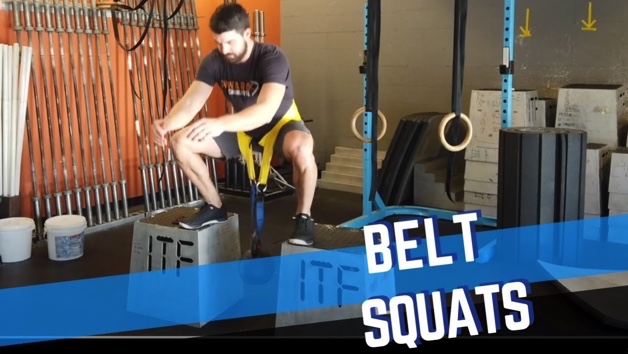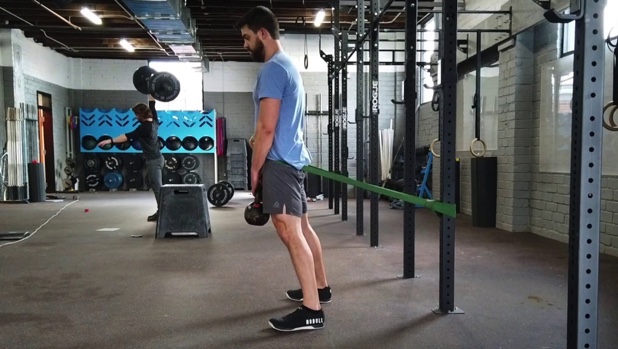Seeing improvements in strength or your physique requires serious work to push the body to new levels. An unfortunate side effect of training is the occasional tweak of a muscle or joint. Usually, these tweaks aren’t enough to deter our training outside of our normal routine, but what about when a more significant injury occurs? After months and years of grinding away at the weights, simply stopping your training and resting isn’t an option if you want to keep your hard-earned gains.
Fortunately, some minor changes to your training plan can be the answer to keep workout intensity up without further damaging tissues. Use these tactics as ideas to implement to continue training when injured (not medical advice).
Limit Range of Motion
The most straightforward tactic for maintaining training intensity when injured is to adjust the exercise range of motion. Often, specific ranges of motion are where the irritated tissue gets most bothered. Limiting the range of motion can be a great way to continue training hard and heavy without slowing tissue healing.
The bench press is an excellent example of how to employ this tactic. Often the bottom position of the bench press is the most irritable. Swapping full range of motion bench pressing out for the floor press is a way to limit the last few degrees of motion and still allow you to move heavy loads.
The deadlift is another excellent example of this. Maybe it hurts to pull the barbell from the ground. Simply raising it a few inches up and lifting from blocks can often be enough for us to push performance without slowing healing.
In more sensitive injuries, we could even take this to the performance of isometric contractions where no movement happens. If we use the deadlift as an example again, we could position the bar under J-cups and pull into the immovable rack. Isometric contractions can be great for building and maintaining strength.
Use Different Exercise Variations
Small changes to the exercise variation you train will often adjust the loading on healing muscles and joints enough to allow continued training. Try changing your grip, torso angle, knee positioning, bar type or placement, etc.
The squat is an excellent example of this. If you’re experiencing shoulder pain in the barbell back squat, look into using a safety squat bar to still load the legs heavy without the strain on the shoulders. Or switching between the front and back squats can often have significant effects. Take back pain with squats as an example. In the back squat, athletes typically squat with a more forward torso compared to the more upright positioning seen in the front squat. This is often enough of a change to continue overloading the legs without flaring up back pain.
Unload Irritated Tissues
Occasionally a muscle or joint will need to be completely unloaded when healing. Getting more creative with our exercise set up can allow us to continue loading other muscles still tolerating training volume.
Sometimes we need to unload a tissue to avoid overstraining it completely. But we can use exercise variations to continue training the surrounding muscles to continue to improve their strength. For example, in someone with low back pain not tolerating compressive loading very well or a post-op shoulder, barbell squat variations may not be possible. The belt squat is one great option to continue loading the legs without risking these healing tissues in other areas.

A banded hip hinge movement is another excellent example of how we can unload the spine while still pushing leg loading.

Place a resistance band around the hips to resist hip extension. As the individual becomes more tolerant of spinal loading, they can add external resistance with barbells or dumbbells to challenge the hips and spine while decreasing the band resistance.
Lighten The Load
If a joint or muscle does not tolerate heavy loads, we can simply train with lighter loads for a much larger rep volume. Previously we believed there to be a “hypertrophy range” of repetitions that produced the greatest hypertrophy effect. Recent research has shown that a much wider range of reps produces hypertrophy stimuli if taken to high fatigue levels. While very high volume might not have the greatest maximal strength effect, we can use this research to our advantage by training with a hypertrophy / general physical preparedness mindset.
As load tolerance improves, we can increase the weight and drop the reps. For example:
- 1st Week: 3×25
- 2nd Week: 3×20
- 3rd Week: 3×15
- 4th Week: 5×10
- 5th Week: 5×8
- 6th Week: 5×5
Blood Flow Restriction Training
Blood flow restriction has emerged as a recent trend in the hypertrophy world with significant promise for strength and hypertrophy gains using light loads. In BFR, we reduce the blood flow into and out of an extremity while exercising. This creates exaggerated responses to exercise where we see significant strength, hypertrophy, and endurance gains with significantly lighter intensity of training than we typically see. This is a more in-depth discussion covered in THIS article.
Train Unilaterally
In the most extreme injuries, some muscles and joints cannot be loaded at all. An example of this would be the first few weeks after many orthopedic surgeries where loading the muscles and joints might undo the surgical procedures performed. In this case, we have very few options for structured training in that area.
Fortunately, research has shown that training the uninjured side can help to maintain strength and muscle mass on the injured extremity. There are multiple neurologic and hormonal theories for why this may occur, but the key point is that unilateral training is significantly better than no training.
While many may fear doing this will create greater deficits in side to side strength and muscle mass, the opposite appears correct. Once the healing process progresses, we can begin using the above strategies to begin rebuilding fitness in the injured side.
Note: none of the above should be considered medical advice. Always defer to a licensed medical professional. But, use the above as a guideline for principles to discuss with your medical team. We hope these ideas allow you to continue getting in some positive training when injured.
Dr. Zach Long is a Physical Therapist in Charlotte, North Carolina, and runs an industry-leading fitness website, “The Barbell Physio”, where he is a trusted resource to thousands of athletes, coaches, and health care professionals across the United States and beyond.
